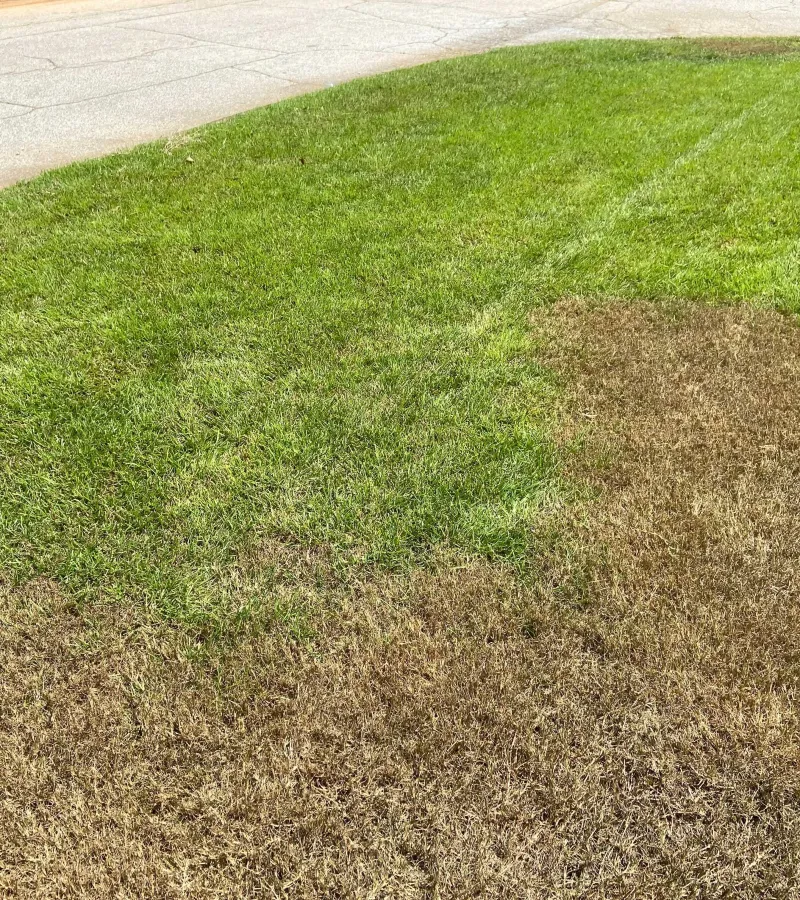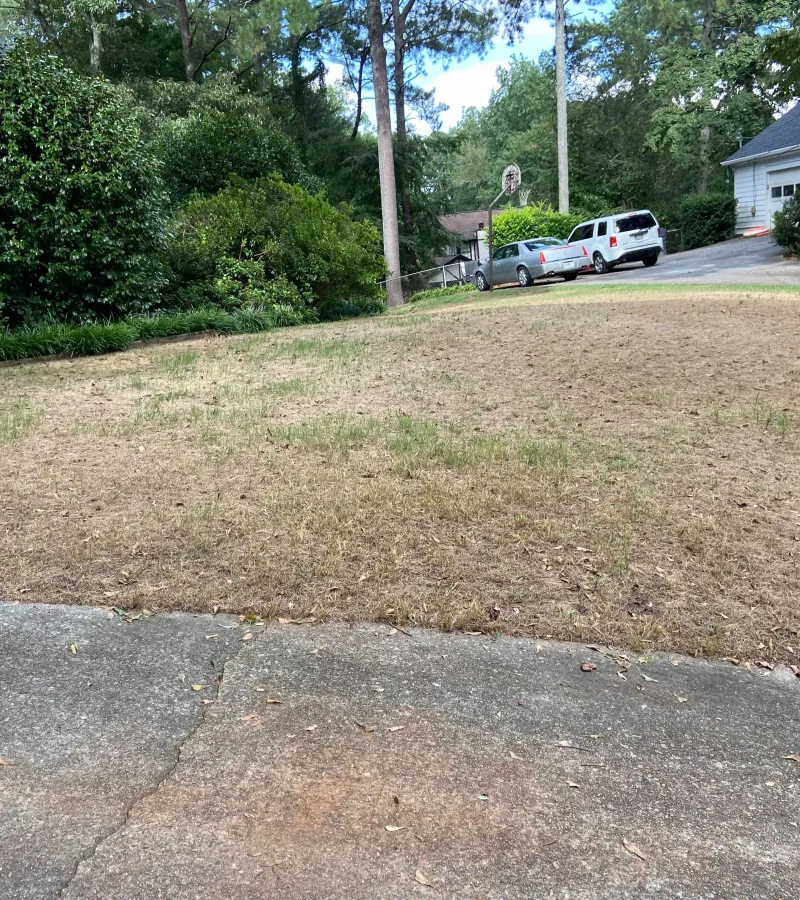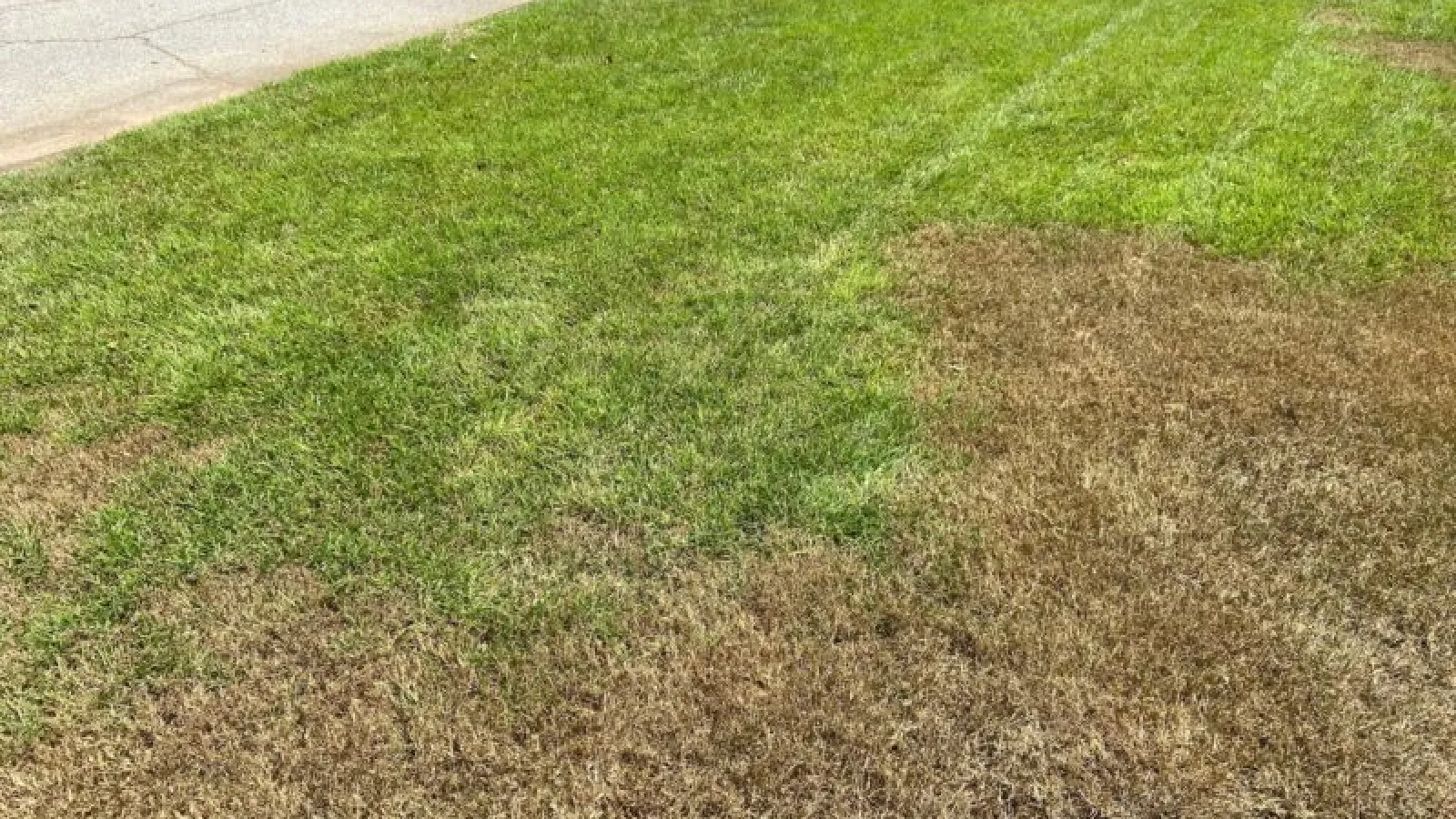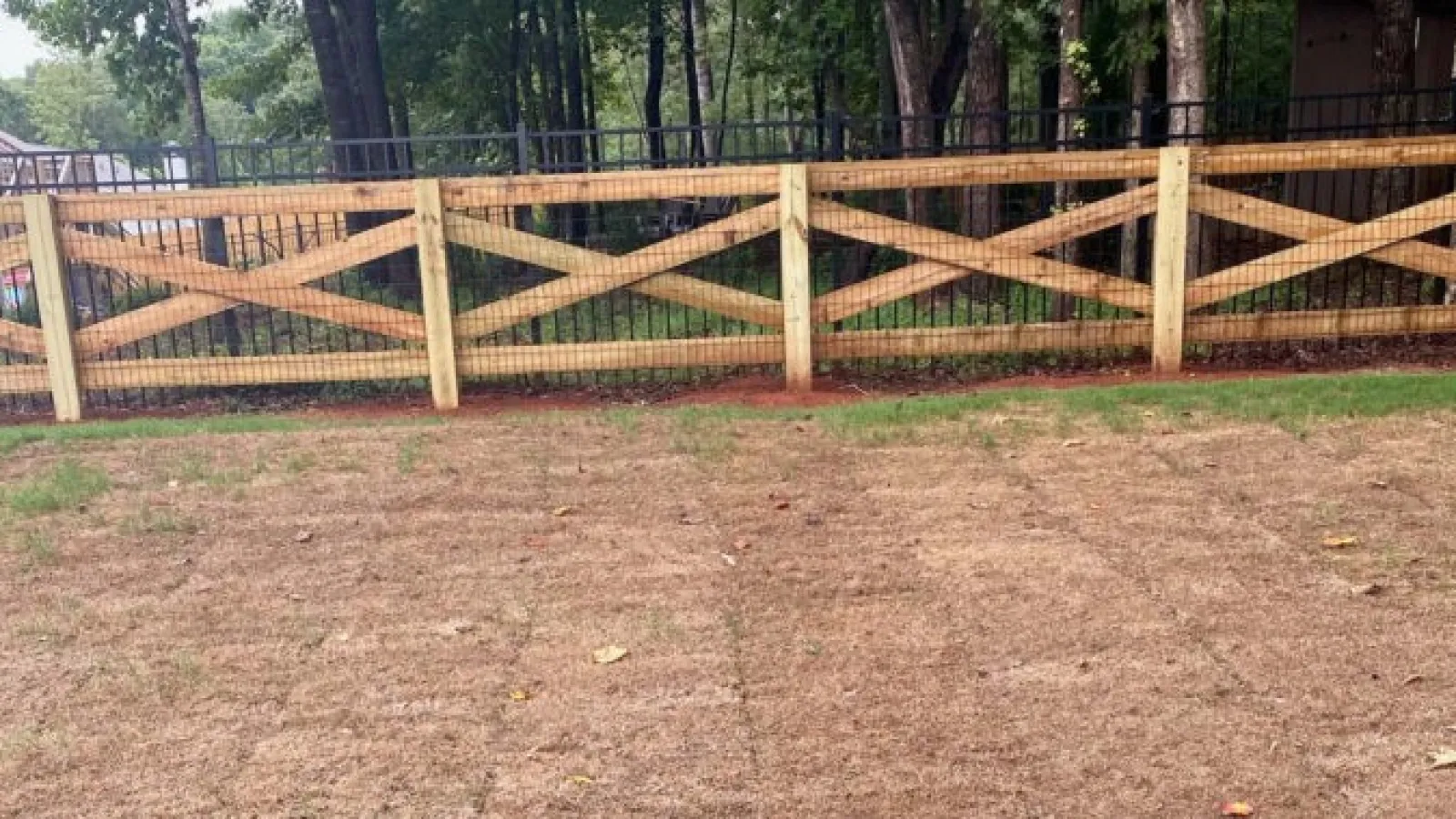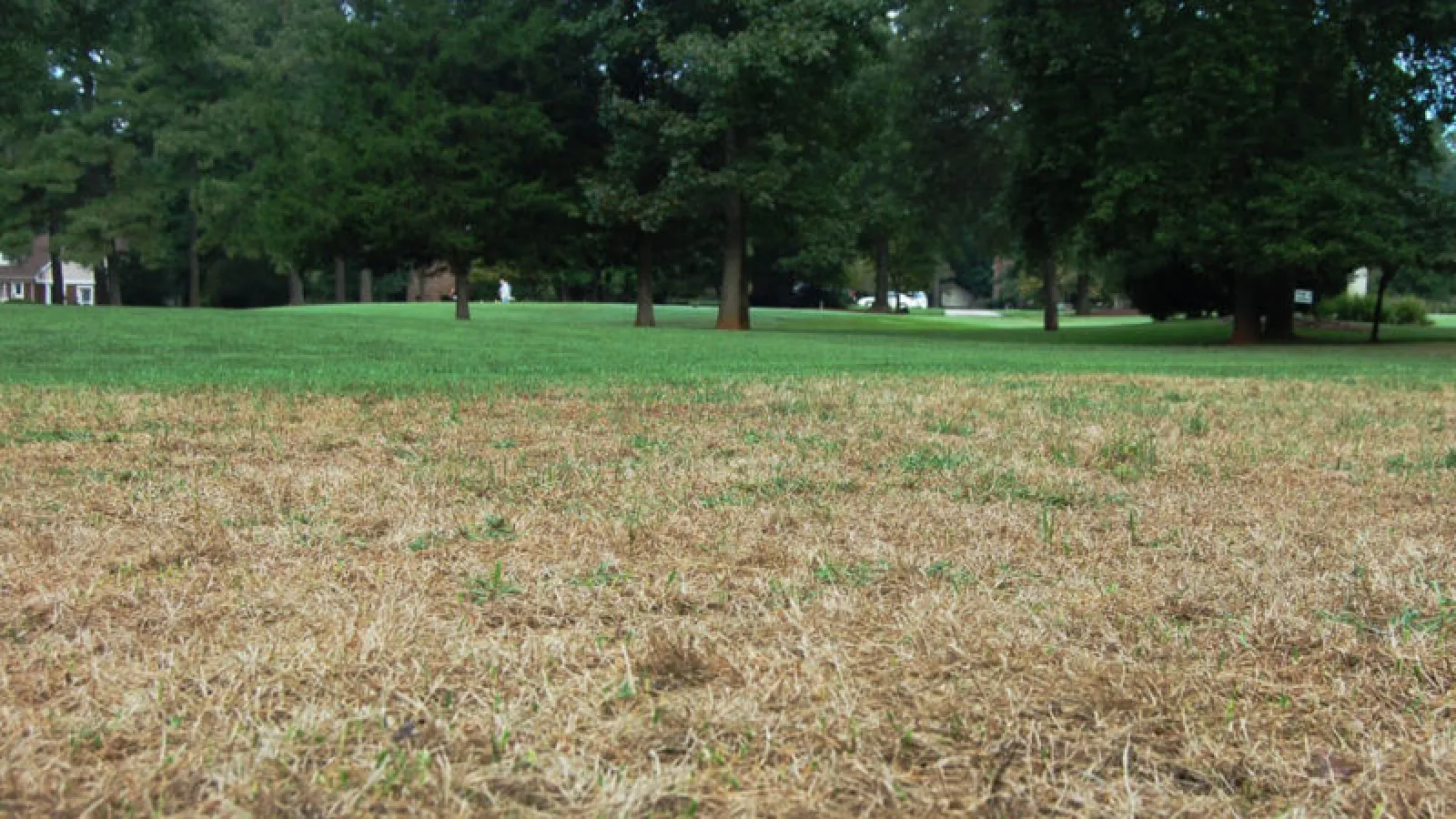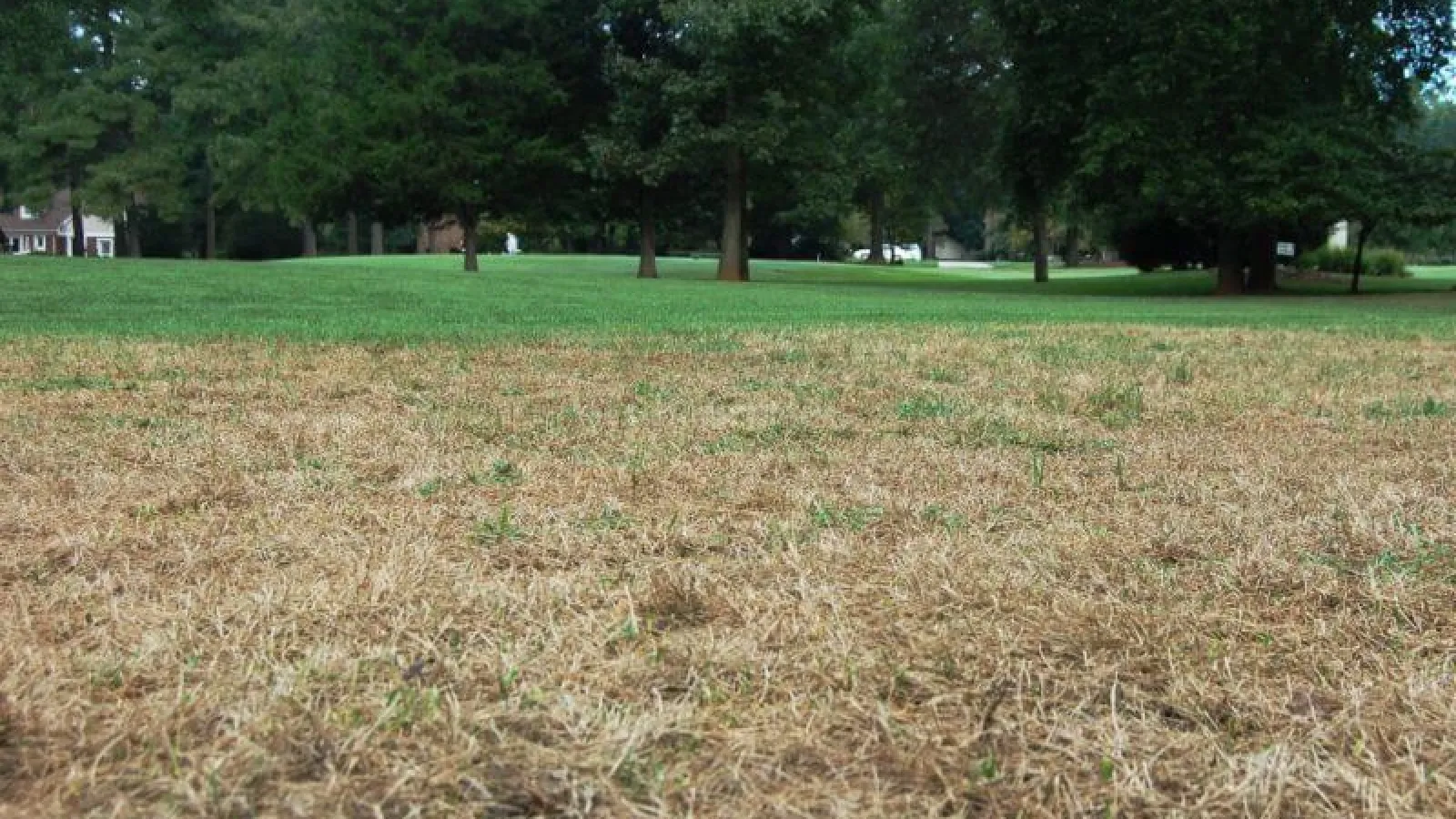Armyworms Treatment
Protect Your Lawn From Armyworms
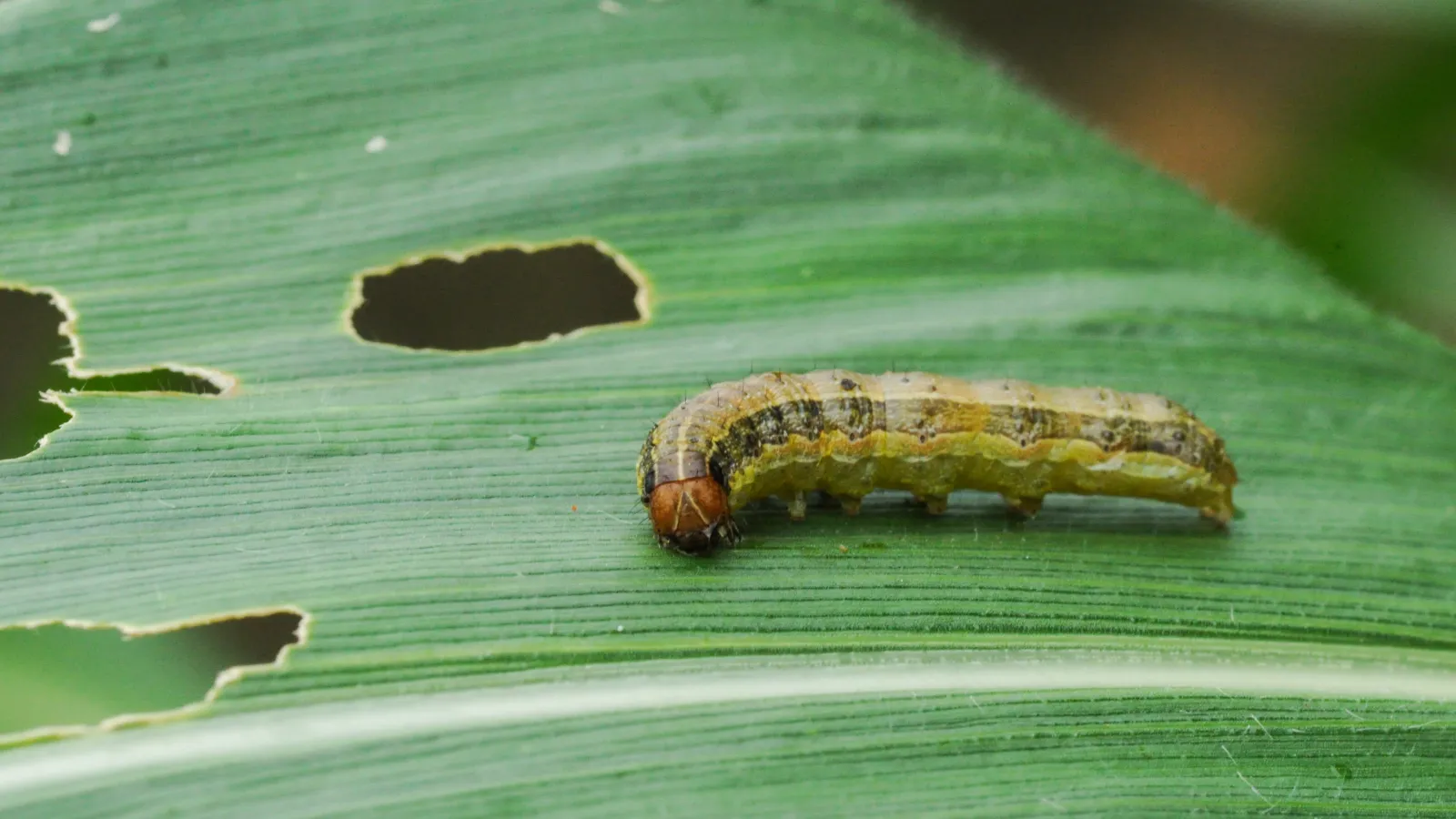
Stop Armyworms From Damaging Your Lawn
Why wait for fall armyworms to "march" across your lawn and cause damage?
We can help! Fall armyworms can be a destructive nuisance in the late summer and early fall. Oddly enough, their infestations come in waves-some years being worse than others.
At first, the tiny caterpillars, approximately 1-1.5 inches long, are green. In large populations (in the thousands), they "march" across your lawn, devouring it as they move. They often choose areas near healthy, well-irrigated lawns.
Armyworm damage may initially resemble drought stress in turf but can progress to complete loss of foliage in a matter of days when numbers are high and when the turf is left untreated. Although any damaged area will recover, it may take weeks.
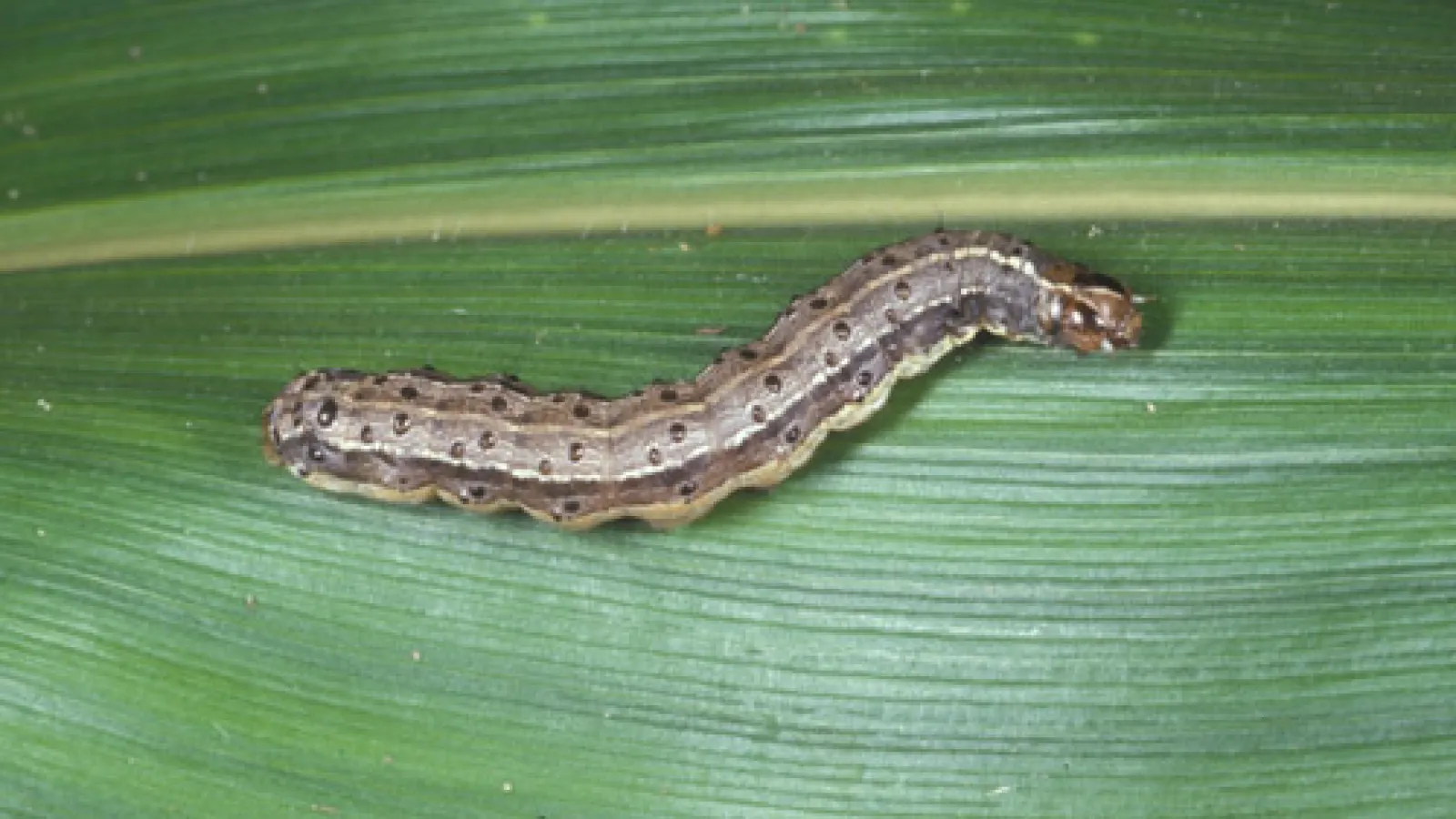
Why Are They Called Armyworms?
Their name originates from agriculture where infestations resemble an "army" as they move across large agricultural fields. These caterpillars primarily feed on Bermuda grass and Fescue grass and cause significant defoliation to lawns over a short period of time when present in high numbers.
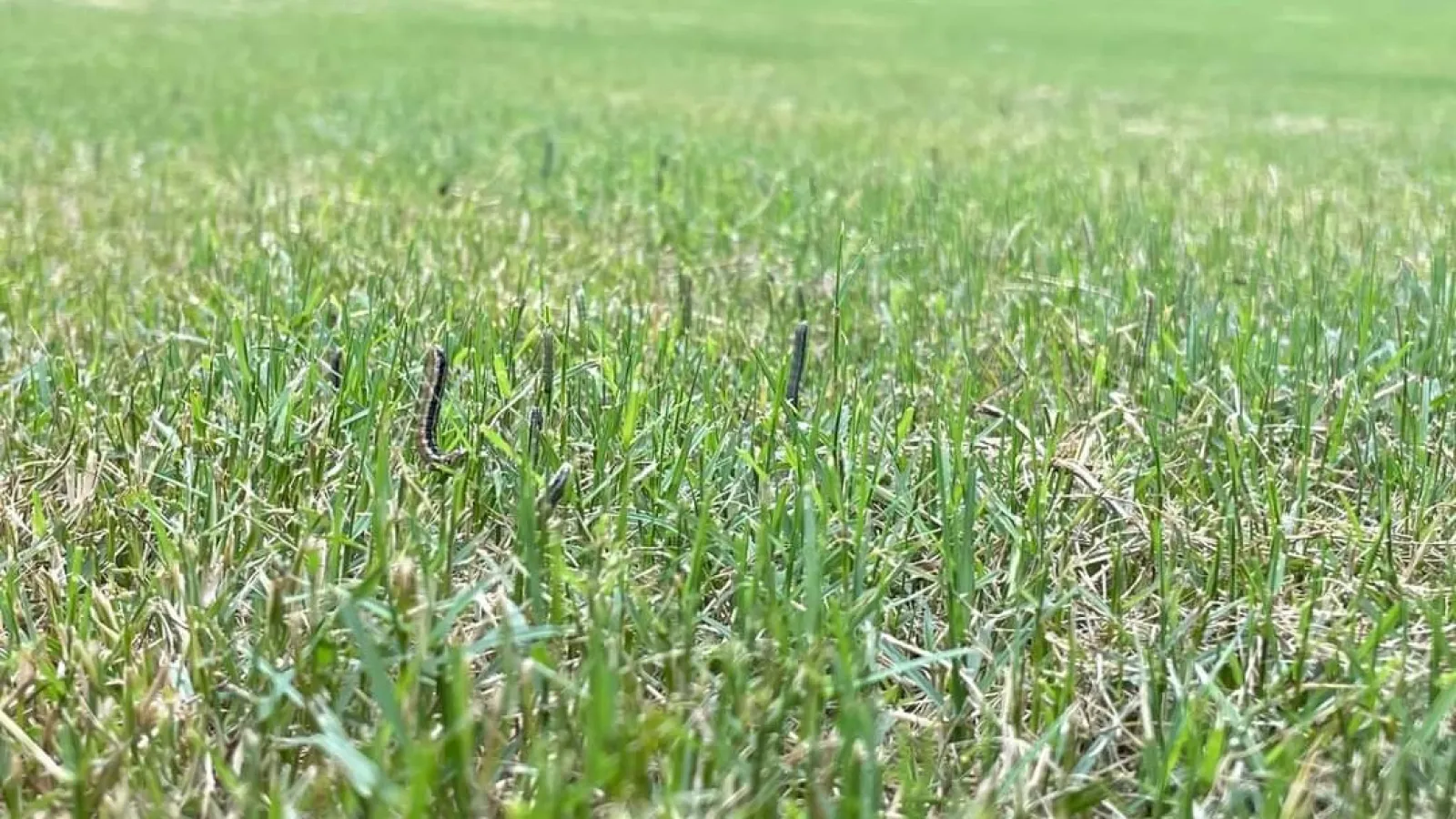
Armyworm Identification
Armyworms are typically one-half to three-quarters in length; although during their larvae stage, they can be very small. They have a distinctive inverted Y marking on their head. Their color ranges from shades of brown to gray, green or yellow-green and they have three white colored stripes behind their head. They are easiest to find in the early morning and late evening hours as this is when they are most active.
Armyworm Frequently Asked Questions
How do I prevent armyworms?
How do I get rid of armyworms?
We offer a preventative, one-time treatment for armyworms. However, if you decide to take a risk, we do offer a one-time treatment for active infestations. With this treatment, the armyworms should start dying out within 24 hours, but the lawn may take several weeks to recover from their damage.
After armyworm treatment, when will my lawn perk up?
It may take weeks for your lawn to recover from armyworm damage, so try your best to quickly identify them and begin treatment immediately. And remember, preventative treatments are more effective and will protect your lawn from damages.
What does armyworm damage look like?
One of the first signs of visible fall armyworm damage is large brown patches of grass throughout the lawn. When looking closer at the grass blades at the perimeter, the leaves may appear to be chewed or torn, while the leaves in the center of the yard will appear to be cut right off the surface.
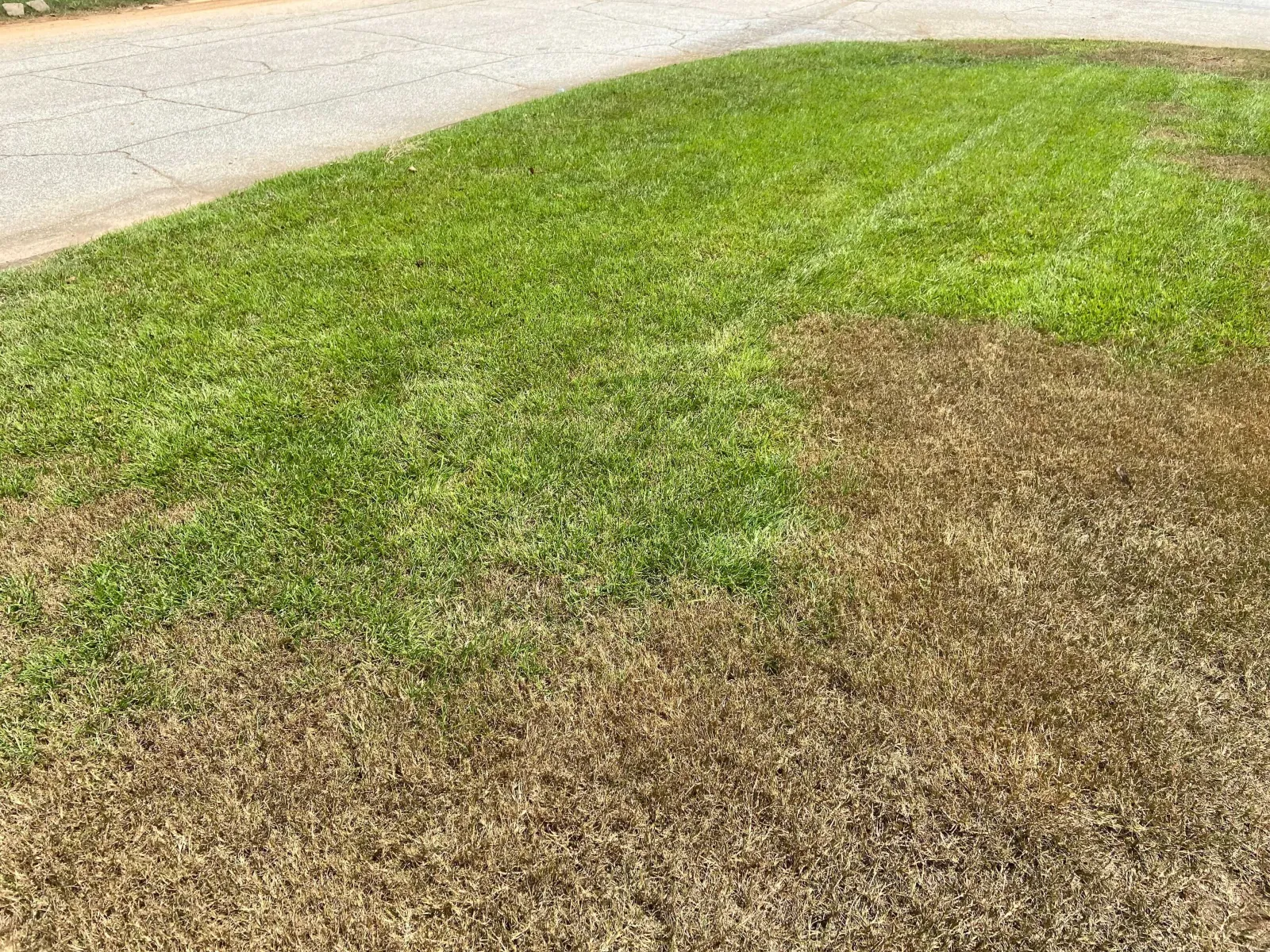
How do I know if I have armyworms?
One of the first signs of visible fall armyworm damage is large brown patches of grass throughout the lawn. When looking closer at the grass blades at the perimeter, the leaves may appear to be chewed or torn, while the leaves in the center of the yard will appear to be cut right off the surface.
When are armyworms active?
Late summer or early fall, when it's dry and hot, is when these little nuisances make their appearance in the southeast.
